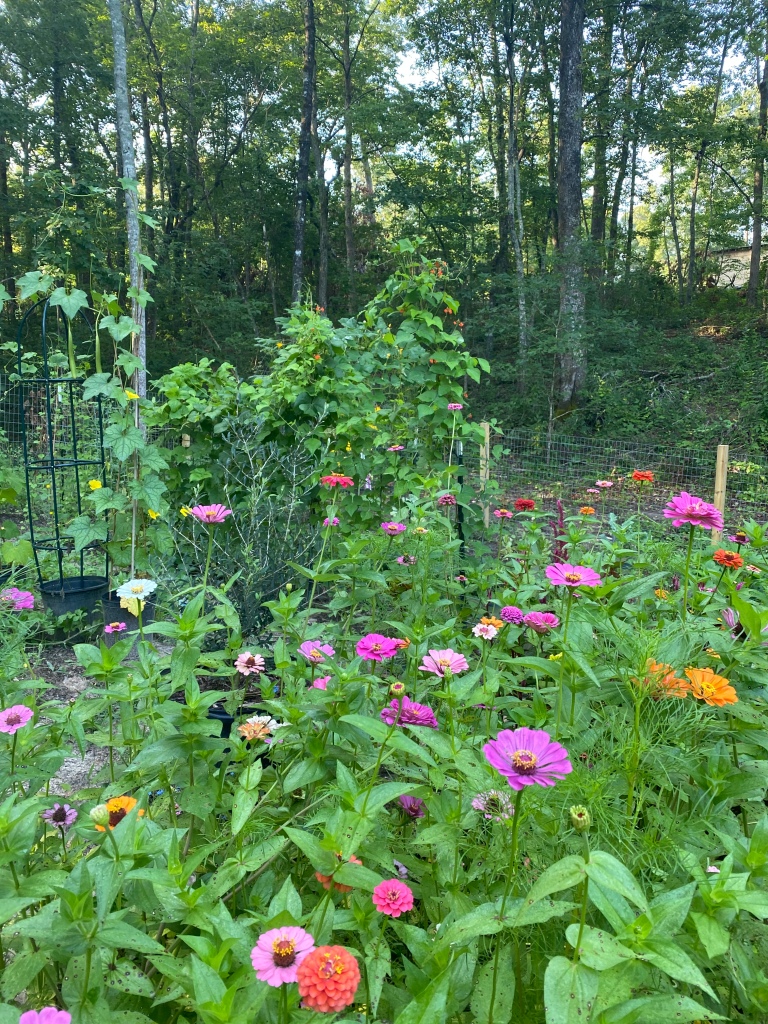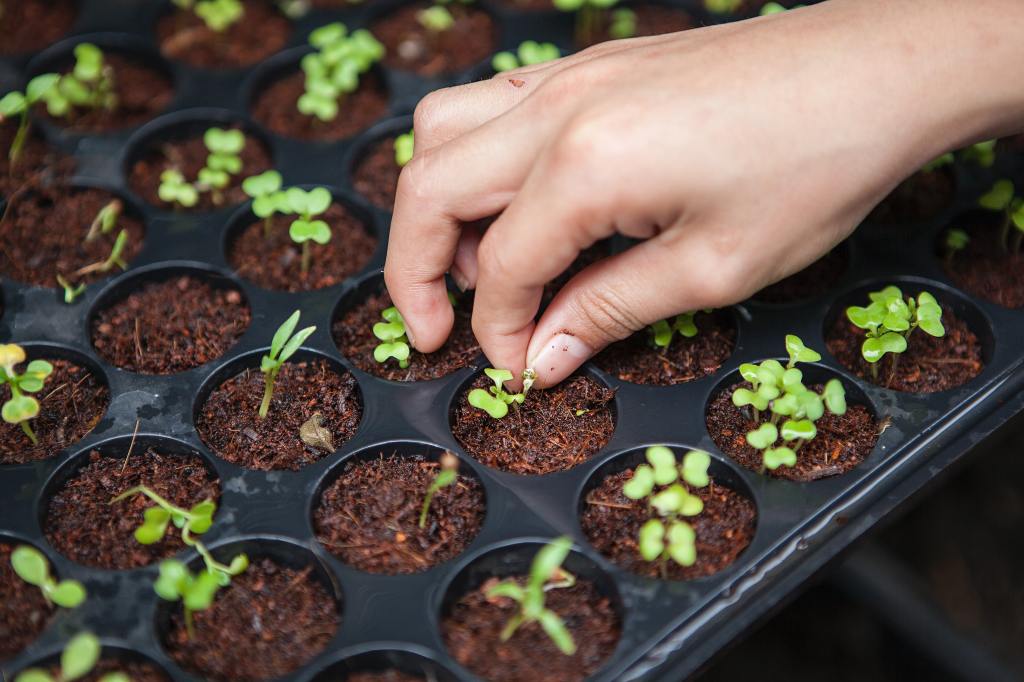If you are like me, at this point in the growing season you are tired and the idea of cleaning the garden and preparing it for the next season seems overwhelming. You are probably tempted to leave the garden as is until the next season. I mean after all you wont be growing anything until the next season right? What difference does it really make? It makes a huge difference in your ability to hit the ground running in the spring as well as in the overall success of your spring plantings. In todays blog post we will cover six tips to help you have a successful growing season in the spring with just a little preparation in the fall.

- Clean Up Debris From Your summer Garden
It is essential to remove debris such as dead plants, weeds, and spoiled/rotted crops from the garden. Doing so helps to decrease the spread of disease, removes breeding ground for pests and prepares the garden for the upcoming season. It also helps you to create a clutter free space for amending the soil and designing the garden layout for the following season.
Pests are opportunists who capitalize on any weakness in your garden’s defense system. One of your biggest weapons against pests in the garden is to keep a clean and debris free garden because it limits places for pets to hide and it removes their food source. Pests such as cutworms, Japanese beetles, harlequin bugs, squash bugs, and tomato horn worms are just a few of the pest that will overwinter in your garden under debris.
Diseases that live and thrive on debris can also be hard to control and may spread quickly with poor garden sanitation. Yellow, black and brown rot, bacterial wilt and blight are just a few of the diseases that are linked to poor garden sanitation. Once debris is removed from the garden dispose of it in the appropriate manner. If there is disease present on the debris being removed from the garden do not not dispose of it in the compost. It is recommended that it is burned if allowed, buried deeply outside the garden or removed as far away from the garden as possible.
- Get Your Soil Tested
Not testing your soil is like taking a trip to the museum while wearing a blind fold. You may experience the museum but miss out on the full experience because you were blind folded. So is planting a garden without first knowing what is missing in your soil. You may not get the experience or yield you were hoping for. Even with this knowledge soil testing is an essential step that many gardeners forego. Testing allows you to know what is lacking in your soil so that you can amend properly.
There are several ways that you can test your soil. You can buy kits that are available online, use home tested methods or you can have your local extension office test your soil. Whatever method you chose consider doing it in November or December to beat the spring rush. You also want to have the test done prior to the ground freezing so that you can mix in any necessary amendments. After obtaining your soil test results, decide what amendments you will be using and apply it.
- Amend Your Soil
Soil amendment is the addition of additional materials (organic or inorganic) to the soil to improve it. Commonly used soil amendments include compost, manure, leaves, peat moss, fertilizer, lime, and sulfur. Some amendments are aimed at increasing water retention while others change the soils acidity, improve permeability and increase the soils fertility.
When amending the soil choose well composted organic materials. Addition of these items in the fall allows them to breakdown and be absorbed into the soil before the spring season. Make sure to follow instructions and apply the correct amounts of amendments. Adding too much or not enough of certain amendments can dramatically alter the PH of the soil, add too many salts and create an hostile environment for your plants. When adding amendments make sure to keep in mind the results of your soil test and follow the instructions on the package.

- Plan Spring Garden
After application of amendments draw up a plan for your garden. With careful planning even the most novice gardener can have a successful garden season. You can either use a garden planning program, an app or good old fashion pen and paper to draw up your plan.
Part of planning is looking back at each season and assessing the successes and failures of the season. Perform a S.W.O.T (strengths, weakness, opportunities, threats) analysis of your garden and your gardening season. This allows you to see what were the strengths of your garden and capitalize on them for the next season. If something works duplicate it and do it again. Look for opportunities for improvement in the garden. What were areas that needed improvement or areas that could work with a little tweaking. Make the changes and reassess after the next season. Address any weaknesses that are identified to prevent it becoming a major problem. Identify any threats and develop methods for neutralizing them.
Once your SWOT analysis is completed address any deficits and develop a list of items you want to plant. Make sure to plant what your space allows, what your family loves and what your family will eat. Try something new but don’t feel pressured to plant everything that everyone is planting as this can be expensive.

- Order seeds (November or December)
It is recommended that seeds should be ordered in November to December to ensure availability of the items that you want to plant. With Covid-19, there has been a shortage of seeds and other gardening supplies so ordering when the catalogs are first released will ensure that you have access to what you want to plant. Companies with large varieties of heirloom and organic seeds include: Bakers Creek, Fruition Seeds, Botanical Interests , Seed Savers and High Mowing Seeds.
- Plan planting schedule
After you have obtained your seeds, organize them according to planting method. If you plan to start seeds inside look at the recommendations on the seed packet and plant accordingly. Most packets will tell you to start seeds a certain amount of weeks prior to the end of first frost. If you plan to direct sow, wait until danger of last frost has passed and plant according to the instructions on the package . Some people find that it helps to create a table/spreadsheet to keep track of their planting schedule. Planing software and apps are also helpful in keeping track of when to plant things.

Gardening doesn’t have to be a scary undertaking. With a little forethought, planning and implementation of the above tips you can achieve a smooth start to your spring gardening season. Happy gardening. Let’s learn and grow together!


Lovely first post!! You are a great writer! I appreciate the tips in the clear-cut way that you deliver them. Question for you: what amendments can I add to get more soil retention in my soil? Thanks!
LikeLiked by 1 person
Hello Rachel,
Thank you for your compliment and for posting this question. Peat moss and high humus content compost are the two most common methods of adding water retention materials to your soil.
LikeLiked by 1 person
Super helpful – keep sharing, Claudia! You might convert me into the gardening life sooner than later 😉
LikeLiked by 1 person
Thanks Dania you never know you may be out there digging in the dirt sooner than you think
LikeLiked by 1 person